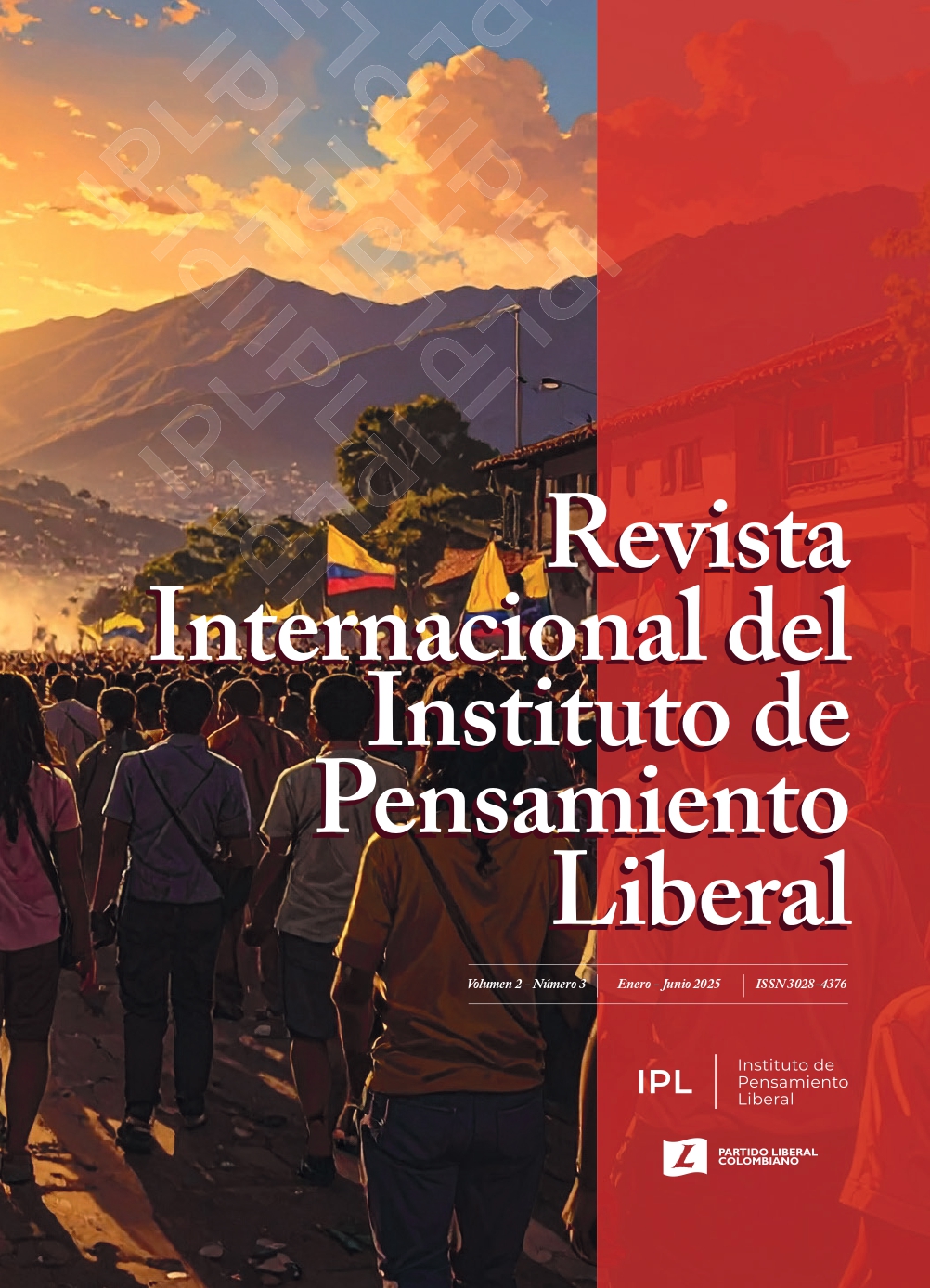Between Arendt and Rancière, a reading on politics and social networks
DOI:
https://doi.org/10.51660/Keywords:
Digital politics, social media, Hannah Arendt, Jaques Ranciere, Public sphere, dissent, political action, attention edonomy, hiperconnectivity, political philosophyAbstract
Objective. This article offers a philosophical analysis of the transformation of politics in the digital age, based on the ideas of Hannah Arendt and Jacques Rancière. It aims to understand how social media has redefined the spaces of political action, dissent, and freedom. The objective is to question the meaning of activity on social networks as a supposed form of resistance and plurality, in contrast with the dynamics of control, discourse trivialization, and the attention economy. Methodology. A qualitative, hermeneutic approach is employed, grounded in the critical analysis of philosophical texts by Arendt and Rancière, in dialogue with contemporary phenomena stemming from digital hyperconnectivity. Interpreting these sources allows for a reflection on the nature of political action in digital environments, as well as on the limits and contradictions of disruptive discourse on social media. Results.
The research shows that although social media initially emerged as a promise of new spaces for dissent, dialogue, and the reconfiguration of the common, these platforms have ultimately reproduced traditional forms of control and exclusion. The attention economy and the logic of immediacy have trivialized political discourse, reducing collective action to fleeting gestures of visibility. This has limited the possibility of genuine politics—understood as the miracle of action (Arendt) or the emergence of dissensus (Rancière). Conclusion.
Social media has failed to establish itself as a space for transformative political action. On the contrary, its structure has enabled new forms of silencing and the reproduction of order. In this context, the thought of Arendt and Rancière remains essential to rethinking the challenges of contemporary politics and distinguishing between mere participation and authentic political action in a digital environment marked by acceleration, symbolic control, and the loss of the common.
Downloads
References
Adler, L (2019). Hannah Arendt. Una biografía. Ariel.
Arendt, H. (2018a). ¿Qué es la política? Primera edición en Colombia. Paidós
Arendt, H. (2018b). La condición humana. 5ta edición. Paidós surcos 15
Arendt, H. (2021). La pluralidad del mundo. Primera edición en Colombia. Penguin random house.
Dean, J. (2005). Communicative capitalism: circulation and the foreclosure of politics. Cultural Politics.Volume 1, Issue 1 PP 51–74. Duke University press.
Fuster, A. (2013). Notas sobre notas: el Diario filosófico de Hannah Arendt. Enrahonar. Quaderns de Filosofia 51, 2013, 143-149. Universitat de Barcelona
Hernández, D. & León, G. (2024). Retos e implicaciones en la democracia: Nuevos formatos de libre expresión en X. Foro Cubano Vol 6, No. 65 – Tema: El fantasma del autoritarismo en la región y las nuevas formas de gobierno.
Laurie, D. (2021). Redes sociales, algoritmos y censura. Futuro Hoy, 2(1), 11-12. https://doi.org/10.5281/zenodo.4654832
Leyton, M. (2014). Libertad: Entre lo público y lo privado en Hannah Arendt. Revista Espirales, 2(2), 47–55. Recuperado a partir de https://revistas.unicartagena.edu.co/index.php/espirales/article/view/768
Mila-Maldonado, J. A., Lara-Aguiar, J. A., Carrasco-Muro, C. D., & Narváez-Ruiz, E. E. (2022). Construcción política de Nayib Bukele en Twitter en el contexto del COVID-19. Universitas, 36, 19–41. https://doi.org/10.17163/uni.n36.2022.01
Navarro, L. & Romero, M. (2016). Los conceptos de poder y violencia en Hannah Arendt: un análisis desde la comunicación. Pensamiento Americano, 9(17), 54-66.
Rancière, J. (1996). El desacuerdo. Política y filosofía (Galilée). Ediciones Nueva Visión
Rancière, J. (2009). El reparto de lo sensible. Estética y política (1st ed.). Lom ediciones.
Rancière, J. (2011). El malestar en la estética. Capital intelectual B.A.
Rancière, J. (2004). The politics of aesthetics. The distribution of sensible. The Distribution of the Sensible: Politics and Aesthetics Artistic Regimes and the Shortcomings of the Notion. G. Rockhill (Ed.).
Rancière, J. (2005). El odio a la democracia. Introducción, traducción y notas de Eduardo Pellejero.
Rancière, J. (2000). La división de lo sensible. Estética y política. Traducción: Antonio Fernández Lera.
Valencia Rincón, JC. (2020). Introducción: la cuantificación de las audiencias de los medios de comunicación, datificación, biopolítica y colonialidad. En Contando colombianos. Medición comercial, métricas de las audiencias y biopolítica. Editorial javeriana.
Villalobos, O. (2002). El concepto de Verdad en Hannah Arendt. Una lectura desde la óptica de la comunicación. Utopía y Praxis Latinoamericana, vol. 7, núm. 16, marzo, 2002, pp. 53-66 Universidad del Zulia. Maracaibo, Venezuela. http://www.redalyc.org/articulo.oa?id=27901605
Zizek, S. (1997). The Plague of Fantasies, London.
Downloads
Published
Issue
Section
License
Copyright (c) 2025 Daniel Hernández Ortiz (Autor/a)

This work is licensed under a Creative Commons Attribution-NonCommercial 4.0 International License.




